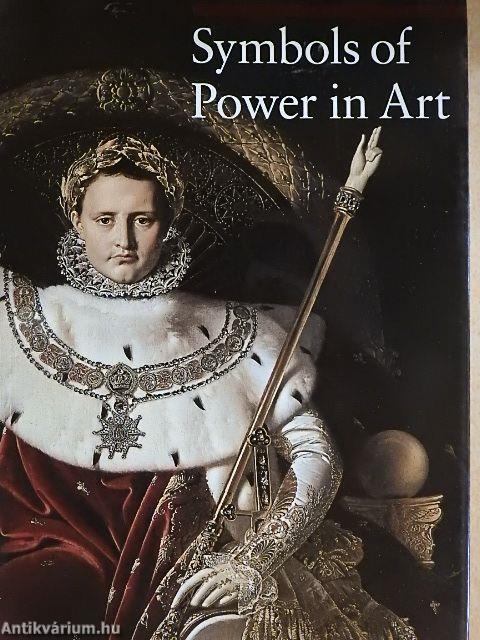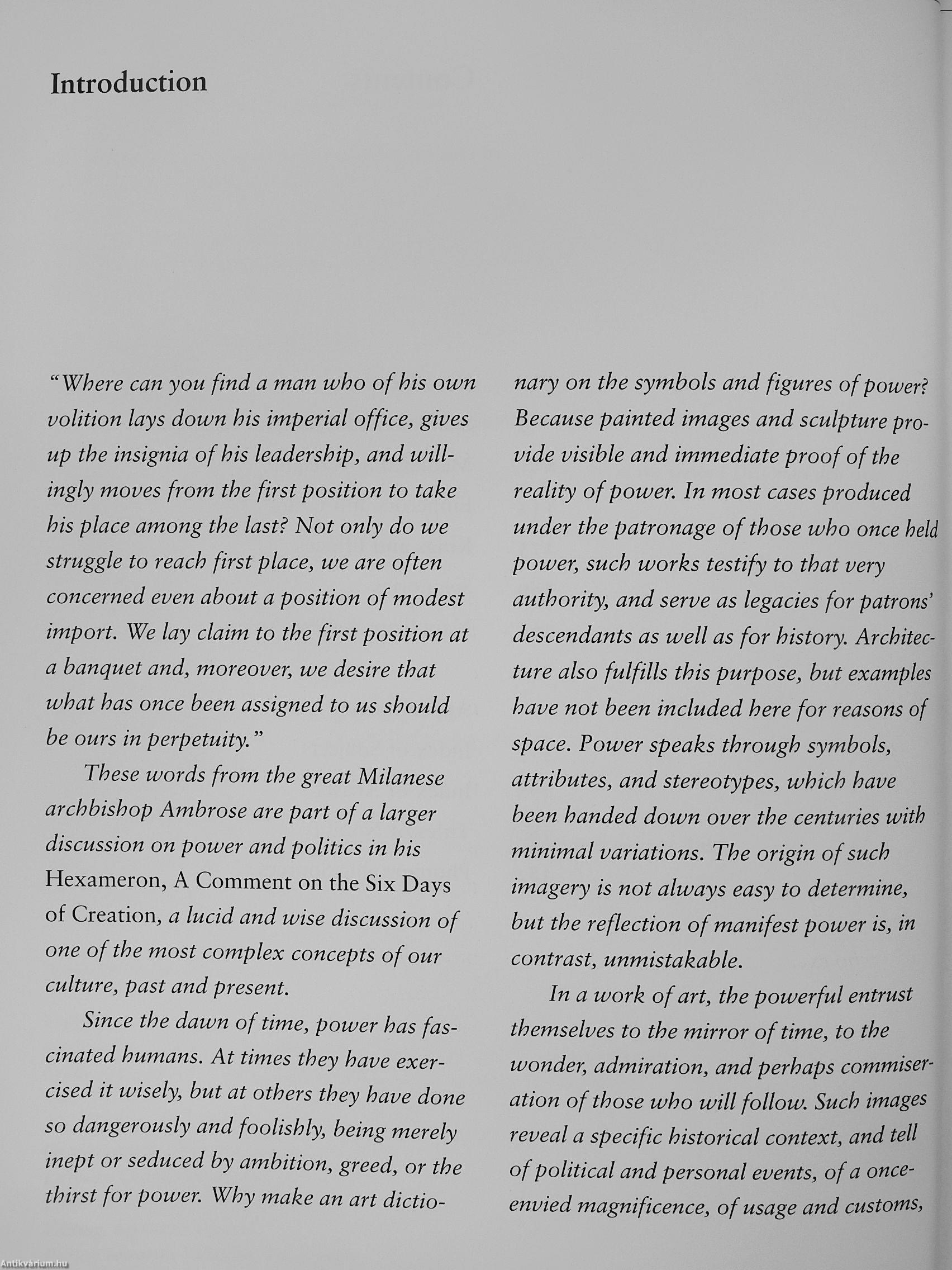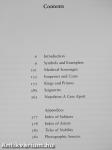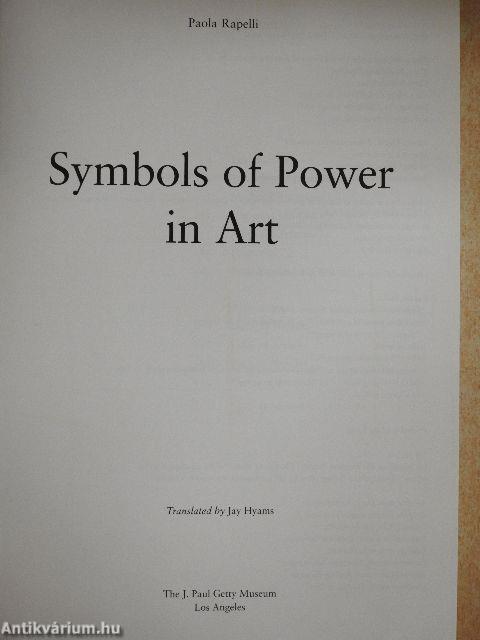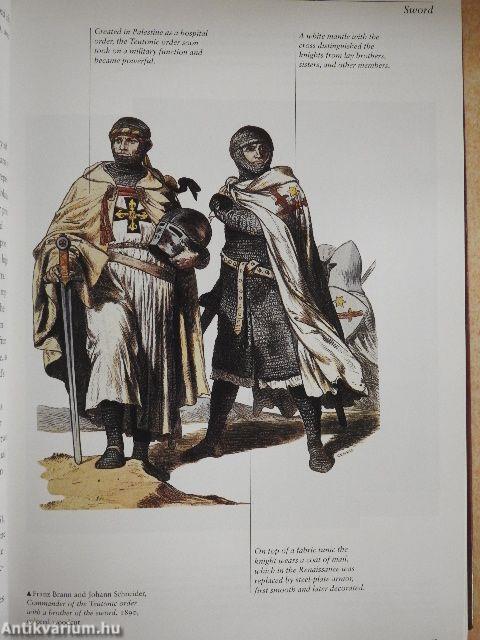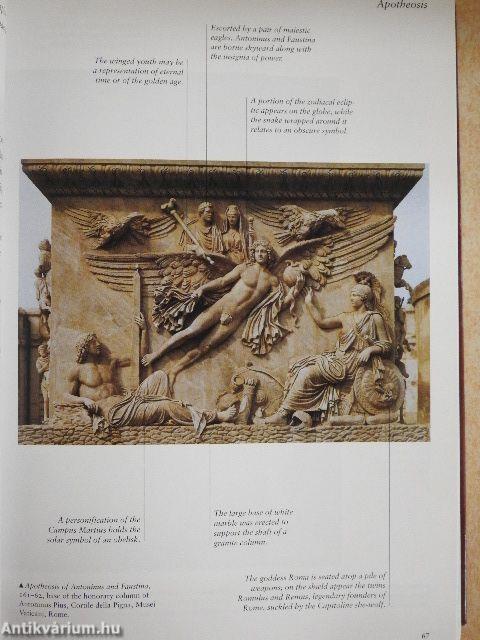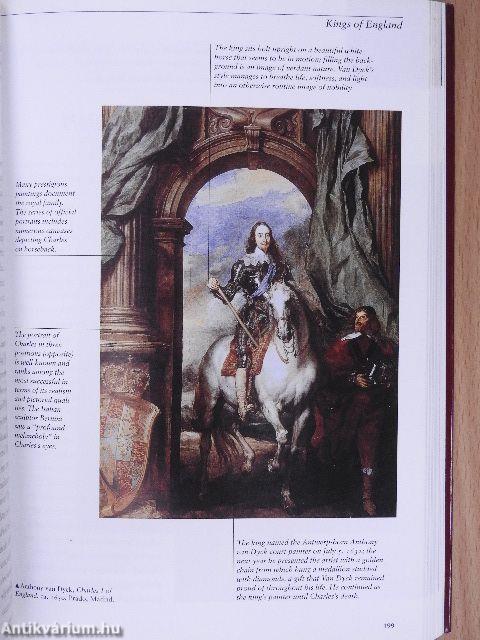1.104.209
kiadvánnyal nyújtjuk Magyarország legnagyobb antikvár könyv-kínálatát

VISSZA
A TETEJÉRE
JAVASLATOKÉszre-
vételek
Symbols of Power in Art
| Kiadó: | The J. Paul Getty Museum |
|---|---|
| Kiadás helye: | Los Angeles |
| Kiadás éve: | |
| Kötés típusa: | Varrott papírkötés |
| Oldalszám: | 381 oldal |
| Sorozatcím: | Guide to Imagery |
| Kötetszám: | |
| Nyelv: | Angol |
| Méret: | 20 cm x 14 cm |
| ISBN: | 978-1-60606-066-7 |
| Megjegyzés: | Színes fotókkal, reprodukciókkal illusztrálva. |
naponta értesítjük a beérkező friss
kiadványokról
naponta értesítjük a beérkező friss
kiadványokról
Előszó
TovábbFülszöveg
Since antiquity rulers have employed symbolic imagery in conveying their power to subjects and rivals, and in leaving a legacy for subsequent generations to admire. This richly illustrated volume surveys the emblems of authority wielded by Western sovereigns from ancient times through the nineteenth century, revealing how rulers have appropriated—and often embellished—the symbols created by their predecessors.
The author begins with Alexander the Great, Julius Caesar, and Con-stantine, who have been looked to as models for the exercise of imperial power by the rulers of later eras. The discussion then turns to an examination of medieval rulers, such as Charlemagne and France's Louis IX, followed by the Russian czars and the great European royal dynasties: the Habsburgs, Bourbons, and Tudors. The aristocratic families who ruled parts of France and Italy during the Renaissance, including the dukes of Burgundy, the Gonzaga of Mantua, and the Medici of Florence, also became adept at... Tovább
Fülszöveg
Since antiquity rulers have employed symbolic imagery in conveying their power to subjects and rivals, and in leaving a legacy for subsequent generations to admire. This richly illustrated volume surveys the emblems of authority wielded by Western sovereigns from ancient times through the nineteenth century, revealing how rulers have appropriated—and often embellished—the symbols created by their predecessors.
The author begins with Alexander the Great, Julius Caesar, and Con-stantine, who have been looked to as models for the exercise of imperial power by the rulers of later eras. The discussion then turns to an examination of medieval rulers, such as Charlemagne and France's Louis IX, followed by the Russian czars and the great European royal dynasties: the Habsburgs, Bourbons, and Tudors. The aristocratic families who ruled parts of France and Italy during the Renaissance, including the dukes of Burgundy, the Gonzaga of Mantua, and the Medici of Florence, also became adept at manipulating the trappings of power. The final chapter is reserved for Napoleon I, perhaps the ultimate master of symbolic display, who assumed the attributes of Roman emperors to project an image of eternal and immutable authority.
In this fascinating survey, the author examines not only regal paraphernalia such as crowns, scepters, and thrones, but also the portraits, sculptures, tapestries, jewelry, and armor created to display their owner's sovereign might. Today these objects form a significant portion of the cuhural heritage of Western civilization.
Paola Rapelli is an art historian living in Italy. She is the author of books on Goya, Monet, and Kandinsky in the Dorling Kindersley ArtBook series (1999). Vissza
Témakörök
- Idegennyelv > Idegennyelvű könyvek > Angol > Művészetek > Festészet
- Idegennyelv > Idegennyelvű könyvek > Angol > Művészetek > Művészettörténet, általános
- Művészetek > Művészettörténet általános > Társadalom és művészet > Egyéb
- Művészetek > Művészettörténet általános > Idegen nyelv > Angol
- Művészetek > Művészettörténet általános > Művészettörténet > Külföldi
- Művészetek > Festészet > Festészeti technikák > Egyéb
- Művészetek > Festészet > Rajz, grafika > Technikák > Egyéb
- Művészetek > Festészet > Idegen nyelv > Angol
- Művészetek > Festészet > Tanulmányok, összefoglalók > Külföldi
- Művészetek > Festészet > Általános festészet > Története
Paola Rapelli
Paola Rapelli műveinek az Antikvarium.hu-n kapható vagy előjegyezhető listáját itt tekintheti meg: Paola Rapelli könyvek, művekMegvásárolható példányok
Nincs megvásárolható példány
A könyv összes megrendelhető példánya elfogyott. Ha kívánja, előjegyezheti a könyvet, és amint a könyv egy újabb példánya elérhető lesz, értesítjük.



